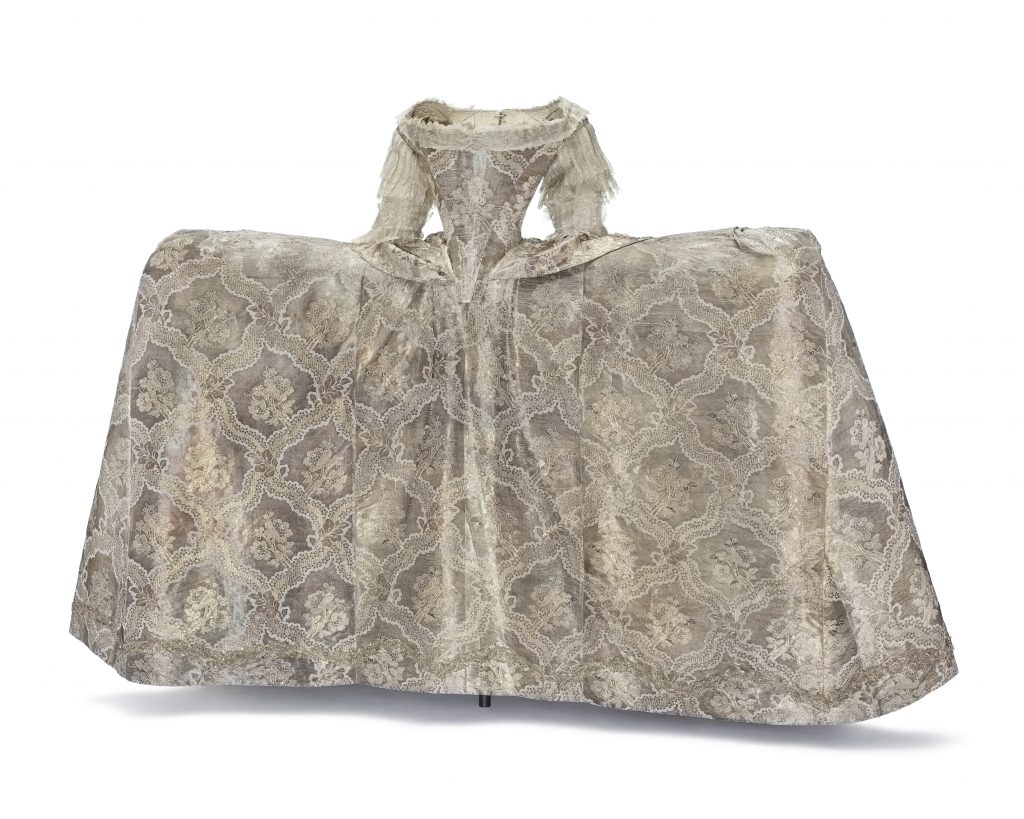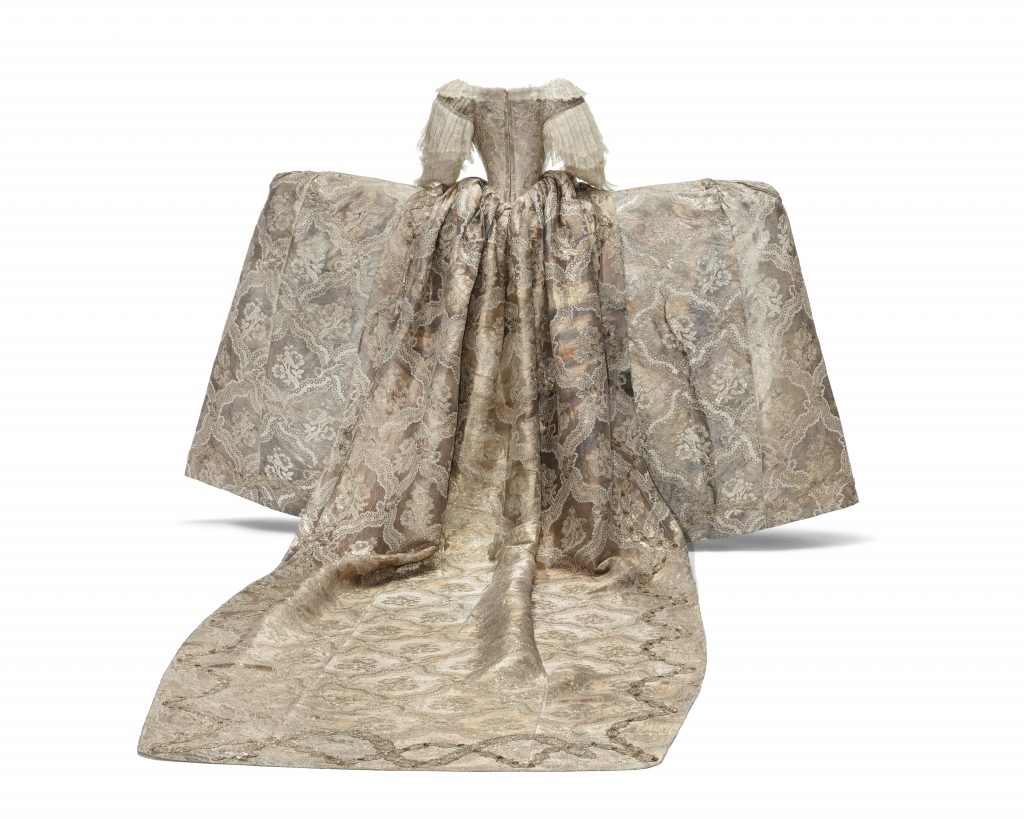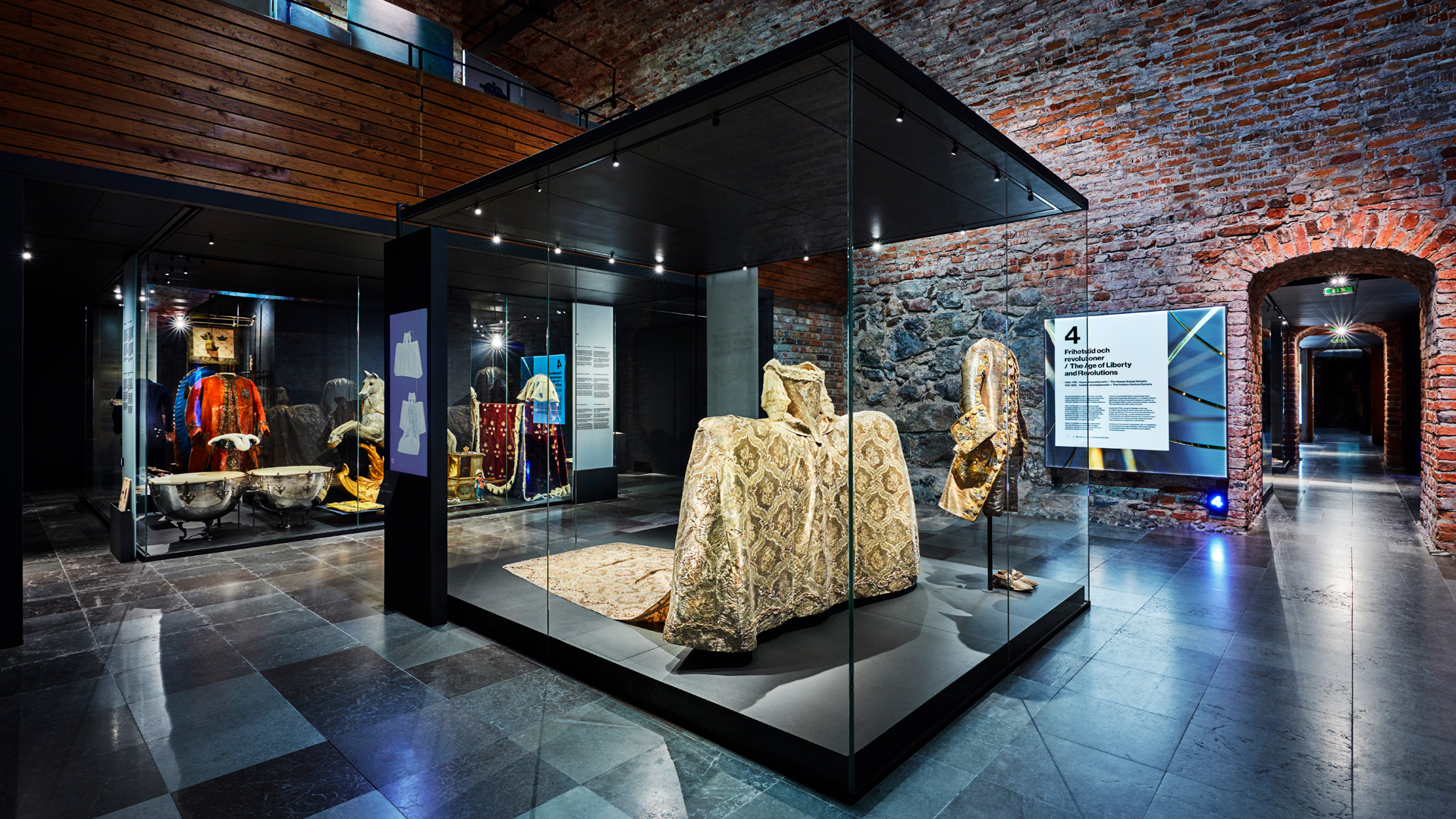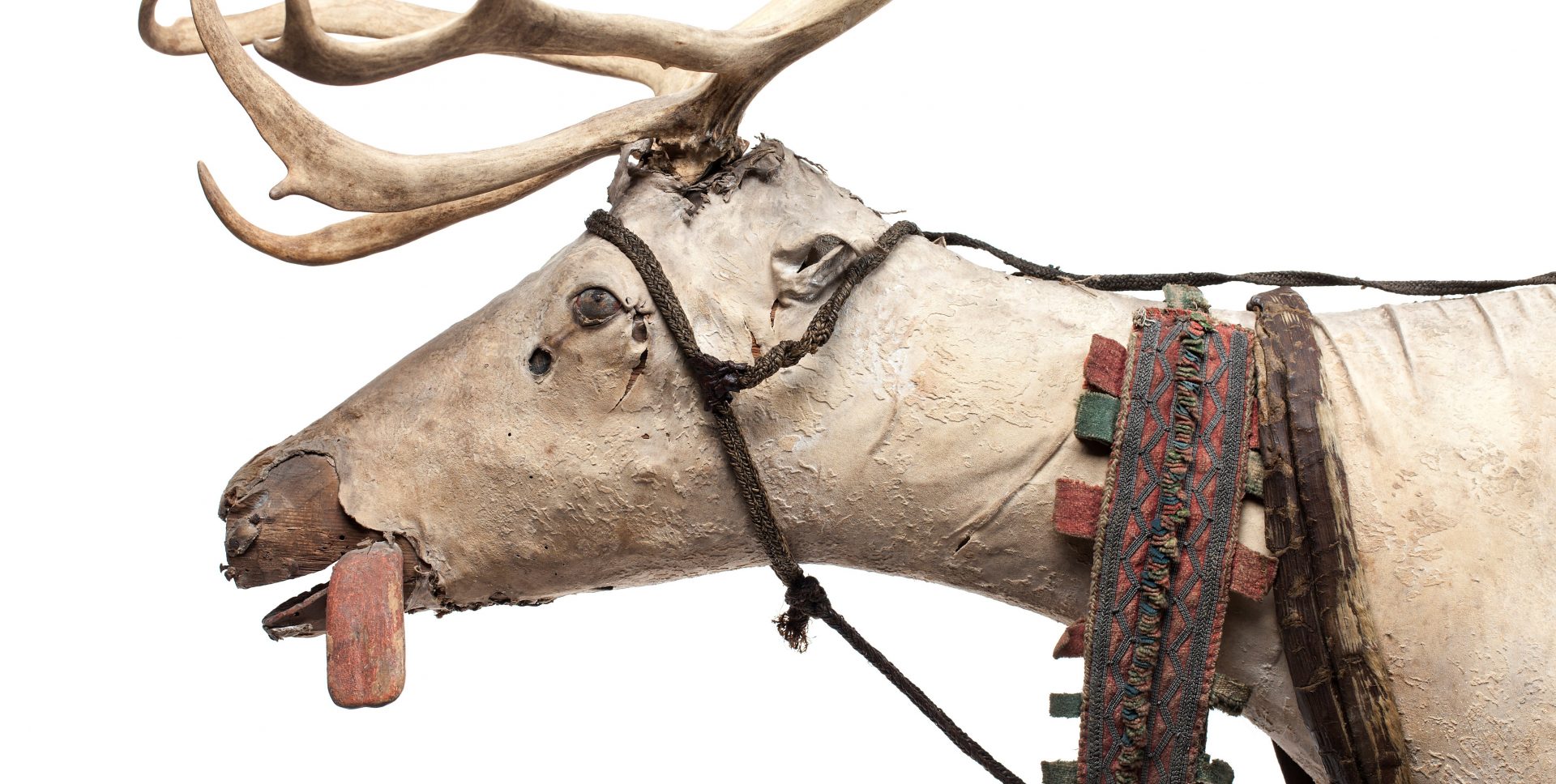
The Dress of All Dresses
The dress was one of several outfits in Danish Princess Sofia Magdalena’s wardrobe. She had been betrothed to Sweden’s Crown Prince Gustav since 1751, when she was five years old. The intention was that the union of the two royals would promote peace between Denmark and Sweden. Before the wedding in 1766, the tailor Ströver produced, among other things, her wedding dress, a court gown made of silver fabric.
The ceremony took place, as was the custom, on two occasions, once in the bride’s home country with a representative of the groom present, and once officially with the actual groom in his home country. When the marriage in Denmark had been completed, a description of the ceremony appeared in Stockholms Post Tidningar on 20 October 1766:
Her Royal Highness was dressed in a rather precious dress, made of silver fabric, and on her head she wore a gold crown richly adorned with jewels. Her train was carried by Lady-in-Waiting Miss von Trolle and Miss v. Rabe.
On 6 November, after the wedding ceremony in Stockholm, Inrikes Tidningar announced:
Their Royal Highnesses, the Crown Prince, who was wearing glacé d'argent richly embroidered with gold, and the Crown Princess, wearing a crown richly adorned with jewels and a dress in a silver fabric with silver ornamentation, whose train was carried by three ladies-in-waiting.
After the wedding ceremony in Stockholm, the dress was transferred to the Royal Dressing Room. The exact year is not known, but it first appeared in the inventory lists in 1773. It may possibly have been included in her personal wardrobe as Crown Princess, before being transferred into “state ownership” when she became Queen. As early as 1774, the same inventory notes that a large number of bands, ornaments, name ciphers and the like had been extracted from the dressing room to be “burned out”, i.e. melted down to pure silver.
Close-up of the dress
After more than 250 years, the dress is still shimmering and spectacular. It is also worth a closer look. Click on the dots to find out more.





